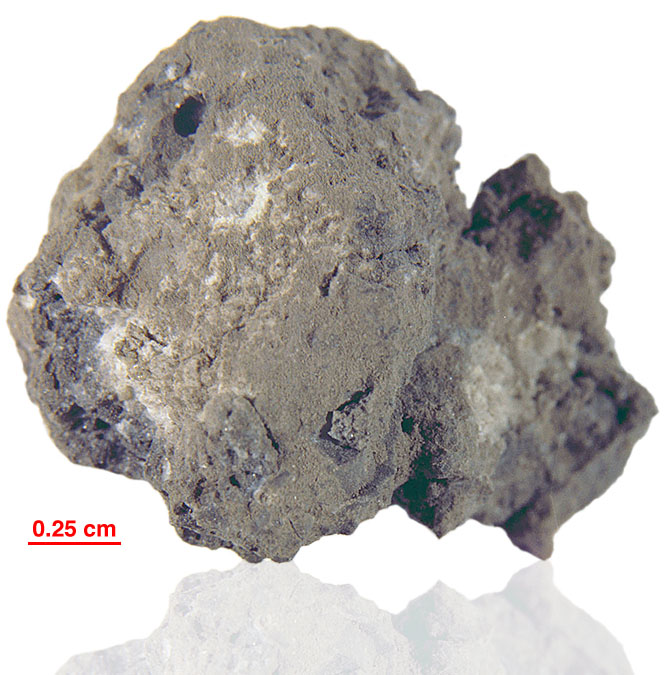
Fact sheet
72705 is a vesicular impact melt containing two conspicuous white clasts, one of which is a cataclasized troctolitic anorthosite with flame-textured plagioclase. The glass is highly dust-coated. It is subangular and coherent, with a few non-penetrative fractures and small vugs. Matrix material appears to be a devitrified glass, estimated to be 90% of the sample; the remainder appear as white plagioclase clasts. A flame-textured plagioclase clast and a spherical gas cavity are shown in rotation 2.
The sample weighed 2.39 grams before analysis and has not been dated.
Further details of this and other Apollo samples are here: http://curator.jsc.nasa.gov/lunar/
Apollo 17, the final manned landing mission, had two objectives: to obtain samples of ancient rocks from the lunar highlands and to look for evidence of younger volcanic activity on the valley floor.
This small Collection contains material deriving from both periods, including igneous rocks around 4.3 billion years old from the lunar highlands as well as younger volcanic samples dating from about 3.6 billion years ago.
Apollo 17 was launched on 7 December 1972.






